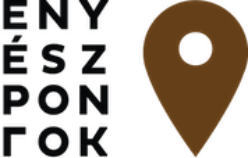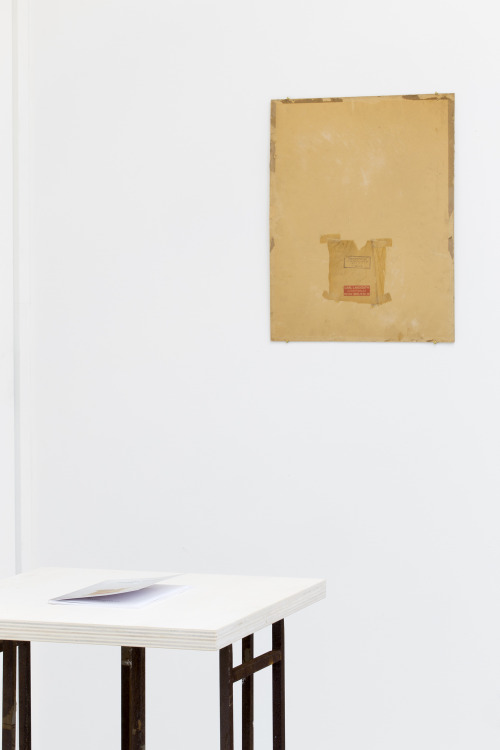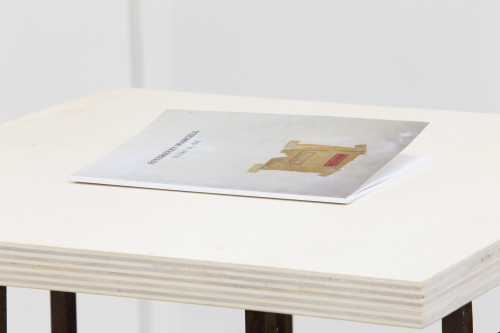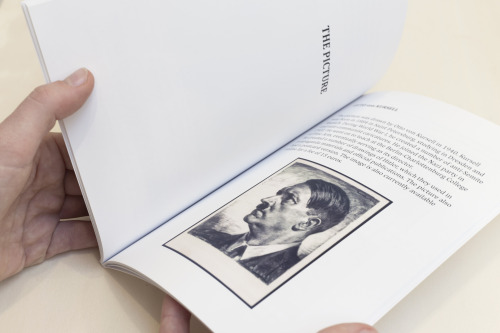2015-ben költöztünk a második kerületi Fillér utcába. A lakás előző tulajdonosa S.J. 2012-es halál óta a lakás üresen állt, úgy, ahogyan ő hagyta. Mivel nem voltak rokonai, az ingóságok az államra szálltak. Semmihez nem nyúlhattunk, amíg a Nemzeti Vagyonkezelő értük nem jött és el nem vitte a leltárba vett dolgokat. Szinte teljesen kiürült a lakás. Ami maradt: pár törött bútor, néhány fotó, pár érdektelen keretezett nyomat, rengeteg képeslap és hatalmas kosz.
A hálószobában egyetlen egy kép maradt a falon. Egy kifakult fotó, mely emlékeim szerint az athéni Akropoliszt ábrázolta. Kis vékony aranyszínű keretben, üveg mögött. Leakasztottam a falról, hogy kidobjam. Egyszer csak észrevettem, hogy a kép hátán van egy pecsét és a pecsét körbe van fóliázva, a fólia meg celluxszal rögzítve.
Megnéztem a feliratot és legnagyobb megdöbbenésemre ez állt rajta:Genehmigt Von der Reichsleitung der NSDAP
N.304
CARL LANGGUTH Kunstverlag
POSEN-BERLIN SO 36
Nem értettem mit keres a Nemzetszocialista Német Munkáspárt, a nácik hivatalos pecsétje egy Akropoliszt ábrázoló fotón. Mindez a Fillér utcában, az új, leendő otthonunkban. Szétszedtem a képkeretet, az üveget, a fotót és akkor vettem észre, hogy a karton, ami a kép hátoldalául szolgált valójában egy hatalmas Adolf Hitlert ábrázoló sokszorosított grafika.
Hogy kerülhetett oda? Ki csinálta a képet? Ki volt S.J.? Kikkel lakott egy házban? Ez a rövid kutatás nem fogja megadni a választ a kérdésekre, de megpróbál a történet minden egyes elemének utánamenni és bemutatni azt. Hamar világossá vált, hogy leginkább, mint valami katalizátor fog működni a talált kép, mely beindítja a házban lakók emlékeit és sikerül bemutatni, hogy egy kis háromlakásos budai ház mennyi történetet, drámát és érdekességet rejt.
A kutatást dokumentáló PDF itt érhető el.
/ We moved to the Fillér street of the second district in 2015. Since the death of its previous owner, S.J. in 2012, the flat was there, empty, exactly the way he left it. As he had no relatives, his movable properties were left to the state. We couldn’t touch anything until the National Asset Management came to collect his things and recorded them to the inventory. The flat became basically empty. What was left: some broken furniture, a couple of photos, some indifferent, framed prints, plenty of postcards and a lot of dirt.
There was one picture left on the wall of the bedroom. A discoloured photo that, as I remember, pictured the Acropolis. In a thin, golden-coloured frame, behind glass. I unhung it from the wall so I could throw it away. I realized only then that there’s a stamp at the back of the photo and the stamp is wrapped around, and the wrapping is tied down with cellux.
I looked at the caption and to my greatest surprise, I found this:
Genehmigt Von der Reichsleitung der NSDAP
N.304
CARL LANGGUTH Kunstverlag
POSEN-BERLIN SO 36
I didn’t understand what the stamp of the National Socialist German Workers’ Party has to do with the photo of the Acropolis. All this in the Fillér street, in our new, prospective home. I disassembled the frame, the glass and the photo, and then I realized that the pasteboard functioning as the back of the photo is actually a huge multiplied graphic portraying Adolf Hitler.
How could it get there? Who made the photo? Who was S.J.? Who did he live with in the same building? This short research won’t provide an answer to all these questions but it will try to go after all the elements of this story to present them. It became clear very fast that the photo would mostly function as a catalyst that inspires the residents of the building to remember, and it will show how many stories, dramas and curiosities can be hidden in a small building with three apartments in Buda.
Documentation of the whole project can be found here.






